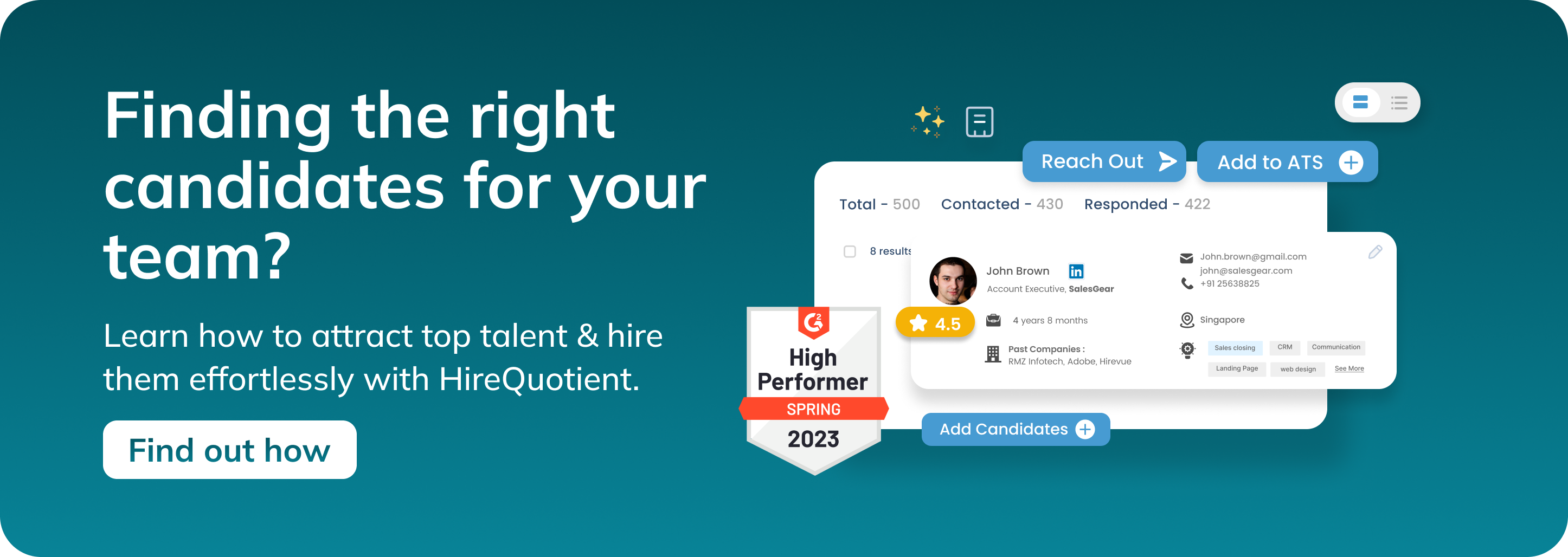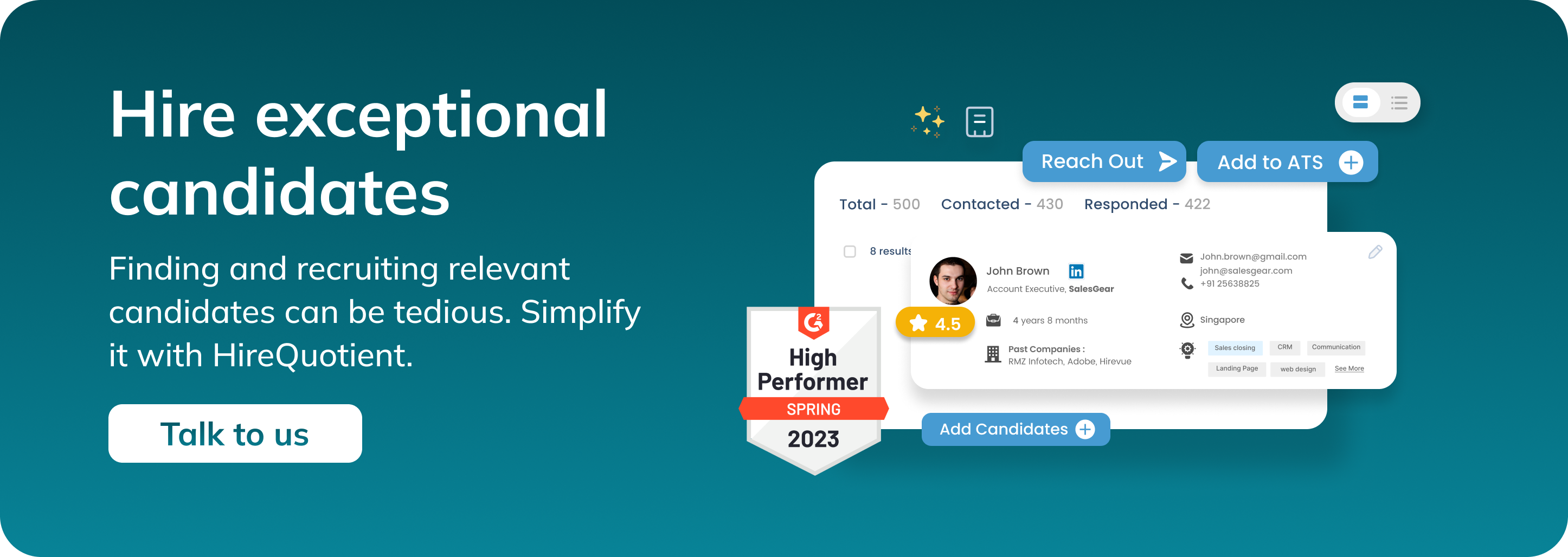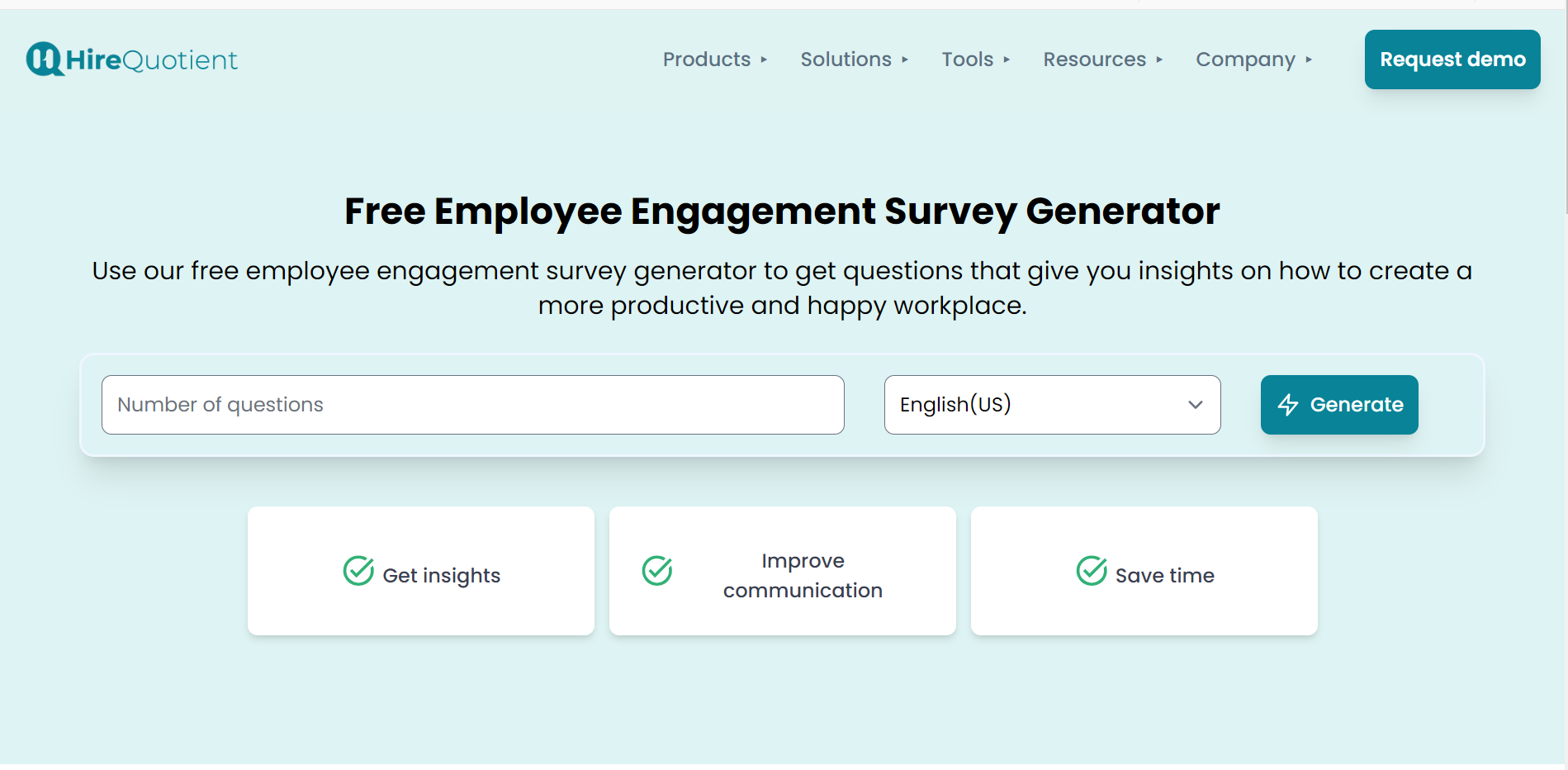Employee Engagement Survey
Learn what is an employee engagement survey, along with its importance, practical implementation tips, and research-backed employee engagement survey questions.
Driving employee engagement requires an awareness of employee feedback, and employee engagement surveys are a potent tool for obtaining this understanding. These surveys are an invaluable tool for discovering important business opportunities and issues, in addition to being useful as feedback tools.
Engagement survey results, when carefully considered and regularly collected, can offer vital information that can positively impact a company's overall trajectory. The information gathered from these surveys can have a profound impact on workplace culture and morale, as well as productivity and productivity.
In this article, let’s cover more about what is an employee engagement survey, along with its importance, practical implementation tips, and research-backed employee engagement survey questions.
So, let’s begin with -
What is an employee engagement survey?
Employers commonly use an employee engagement survey to understand and evaluate the employee engagement levels in their organization. All employees participate in these annual surveys designed to uncover and transform employee thoughts into useful insights. They aid in quantifying the degree to which workers have an emotional and mental bond with their jobs, their teams, and the company as one.
What is the purpose of an employee engagement survey?
In order to foster a healthy work environment, organizations must conduct employee engagement surveys. The results of these surveys provide a clear, data-driven path to understanding and improving the factors that influence employee engagement, ultimately leading to a more motivated, committed, and productive workforce. Engaged employees are shown to be 3.3 times more likely to feel ownership and involvement in the survey action-taking process.
- Employee engagement surveys delve deeply into the psychology of the workforce, revealing information that could otherwise go unnoticed. These surveys give workers a platform to voice their opinions about a range of topics related to their jobs, such as how they feel about their interactions with management, whether they share the company's goal, etc. Gaining knowledge of these factors helps us understand the driving forces behind employee motivation, contentment, and productivity. Furthermore, these data can also be a useful tool for guiding internal and external company decisions.
- These questionnaires also offer a methodical and standardized approach to gauging employee engagement. They provide leadership and HR professionals with precise measures to evaluate the state of their organization's culture and employee morale, helping to quantify what can frequently feel intangible. It is simpler to pinpoint areas that want improvement and those that are strong with accurate measurement.
- Another significant aspect of these employee engagement surveys is their ability to highlight actionable next steps. The feedback obtained is not just for contemplation but for action. Organizations can use the data to create targeted strategies for enhancing employee engagement. The survey results can inform everything from policy changes and managerial training programs to initiatives aimed at improving work-life balance or communication within teams.
Related reads: Employee Recognition Survey: What to Ask?
What are the different types of engagement surveys?
Each type of survey plays a unique role in painting a comprehensive picture of employee engagement within an organization. So, let’s understand some of the different types of employee engagement surveys:
Pulse Surveys
Pulse surveys are shorter and carried out more regularly than annual surveys; they can even be done quarterly or even monthly. They give brief insights into the attitudes of present employees by concentrating on particular areas of interest or concern. In order to make timely adjustments, pulse surveys are a useful tool for assessing the immediate effects of new projects or changes inside the business.
Annual Employee Engagement Survey
The purpose of this extensive survey is to determine the general degree of employee happiness and engagement. It is usually carried out once a year. It addresses a wide range of subjects, including workplace culture, management effectiveness, and job happiness. The information collected helps firms monitor their progress in enhancing the workplace environment by providing a baseline for comparisons between the previous and current years.
Employee Lifecycle Surveys
These surveys are given out at pivotal points in an employee's career, like onboarding, post-training, after big projects, or when they leave the company. Each lifecycle survey is designed to collect input pertinent to that particular point in an employee's career; for example, onboarding surveys may concentrate on the efficiency of the onboarding process, while exit surveys may look for reasons for leaving. The information gathered from these surveys is invaluable in helping to improve the employee experience at every stage of the employee lifecycle. To know more about the employee lifecycle surveys, visit: https://www.hirequotient.com/blog/employee-life-cycle-surveys
How to create an employee engagement survey?
Here are some of the best ways to create an employee engagement survey:
Start with survey design
It takes considerable planning to create an employee engagement survey that yields the finest data and outcomes. Start by creating a straightforward and understandable survey structure. Workers must comprehend how to respond to inquiries, and managers must comprehend how to peruse the report. As many employees as possible should be aware of the findings of your engagement study and take appropriate action.
Create a checklist of questions to ask employees
Not only can an employee engagement survey assist you in resolving issues within your company, but it should also highlight your positive actions from the perspective of your engaged workforce. To do this, you must be certain that the answers to your questions will provide insightful information about their work experience.
Identify the segments you need to focus on
The next stage is to decide which themes you wish to gauge and then develop questions for your employee engagement survey that are relevant to those themes. Aim to ask ten to fifteen questions about the employee experience, on average. And don't forget to provide a means of recording demographics.
How to conduct an employee engagement survey?
Conducting an employee engagement survey involves several steps to ensure the process is effective, the data collected is meaningful, and the results can be used to enhance employee satisfaction and productivity.
Here’s a step-by-step guide:
1. Define Objectives
- Determine Goals: Understand what you want to achieve with the survey. Are you looking to measure overall engagement, identify areas for improvement, or gather feedback on specific initiatives?
- Key Metrics: Decide on the key engagement metrics you want to measure, such as job satisfaction, commitment, motivation, and work environment.
2. Design the Survey
- Questionnaire Development: Create questions that are clear, concise, and relevant to your objectives. Use a mix of question types such as Likert scales (e.g., strongly agree to strongly disagree), multiple-choice, and open-ended questions.
- Topics to Cover: Include questions on leadership, communication, career development, work-life balance, recognition, and workplace culture.
- Anonymity: Ensure anonymity to encourage honest and candid feedback.
3. Choose the Survey Tool
- Survey Platforms: Select a reliable survey tool or platform that suits your needs. Popular options include SurveyMonkey, Google Forms, Qualtrics, and Typeform.
- Customization and Branding: Customize the survey with your organization’s branding to make it more engaging.
4. Communicate the Survey
- Inform Employees: Clearly communicate the purpose, importance, and confidentiality of the survey to your employees.
- Instructions: Provide detailed instructions on how to complete the survey and the deadline for submission.
- Encouragement: Encourage participation by explaining how the feedback will be used to make positive changes.
5. Administer the Survey
- Distribution: Distribute the survey via email, internal communication platforms, or company intranet.
- Response Time: Give employees sufficient time to complete the survey, typically 1-2 weeks.
- Reminders: Send reminders to increase participation rates, but ensure they are not too frequent to avoid annoyance.
6. Collect and Analyze Data
- Data Collection: Monitor the response rate and ensure data is being collected properly.
- Data Analysis: Analyze the data using statistical tools to identify trends, strengths, and areas for improvement. Look for patterns and correlations in the responses.
7. Report Findings
- Summary Reports: Create summary reports highlighting key findings, trends, and insights. Use charts and graphs for better visualization.
- Detailed Analysis: Provide detailed analysis for specific departments or teams if necessary.
8. Share Results with Employees
- Transparency: Share the results with employees to show transparency and build trust. Highlight both positive feedback and areas needing improvement.
- Action Plan: Present a clear action plan based on the survey results, outlining steps the organization will take to address concerns and improve engagement.
9. Implement Changes
- Actionable Steps: Implement the changes outlined in your action plan. This could involve policy changes, new initiatives, or focused interventions.
- Employee Involvement: Involve employees in the implementation process to increase buy-in and ensure the changes are practical and effective.
10. Follow-Up
- Regular Check-ins: Conduct follow-up surveys or pulse checks periodically to monitor progress and the impact of changes.
- Continuous Improvement: Use feedback from follow-up surveys to make ongoing improvements.
Tips for Success
- Leadership Support: Ensure senior leaders are committed to the survey process and follow-up actions.
- Confidentiality Assurance: Reiterate the confidentiality of responses to encourage honest feedback.
- Engagement Culture: Foster a culture of continuous feedback and improvement beyond the survey.
By following these steps, you can conduct a thorough and effective employee engagement survey that provides valuable insights and drives meaningful improvements in your organization.
Employee engagement survey examples
It's crucial to ask the correct questions in an employee engagement survey. Important aspects of engagement, such as future goals, alignment, and employee satisfaction, should be covered in a survey. You must include questions in each of these categories and know how to use them in your surveys if you want to create a questionnaire that meets the needs of your company.
Future Goals
1. Do you feel that there are adequate opportunities for career growth and development within our company?
2. How likely are you to see yourself working at our company in the next two years?
3. Do you feel that the company supports your efforts to develop new skills that will help you achieve your career goals?
4. Are you satisfied with the personal growth opportunities provided by the company?
5. How often do you set career goals with your manager?
Alignment
6. Do you have a clear understanding of the company's overall goals and objectives?
7. Do you understand how your role contributes to the company's success?
8. Do you believe that the company’s values align with your personal values?
9. Does the leadership effectively communicate the company's vision and goals?
10. Do you feel that your team is aligned with the company's strategic objectives?
Employee Satisfaction
11. How satisfied are you with your current job role?
12. Do you feel you have a good work-life balance?
13. Do you feel adequately recognized for your contributions at work?
14. Are you satisfied with the physical work environment (office layout, equipment, etc.)?
15. Do you feel supported by your immediate supervisor/manager?
16. Are you satisfied with the level of collaboration and teamwork within your team?
17. Do you feel that you receive constructive feedback on your work?
18. Are you satisfied with your compensation and benefits package?
19. Do you feel secure in your job?
20. How satisfied are you with the company culture?
21. Do you feel that your workload is manageable?
Conclusion
Effective employee engagement strategies enhance productivity but also foster a positive work environment, reduce turnover, and promote overall company success. However, gathering and acting on employee feedback can be a complex and time-consuming process without the right tools.
At HireQuotient, we've made it super easy for you to gather, analyze, and act on feedback from your entire company with our employee engagement survey platform.
Here's what you'll love about it:
- Trusted Survey Design: We provide reliable survey templates you can count on.
- Benchmarking: Compare your results against America’s Best Places to Work.
- Manager Empowerment: Give your managers easy access to the insights they need.
- Action Planning: Get actionable plans to help your teams make real progress.
Create a more productive and happy workplace with HireQuotient’s employee engagement survey tool. Want to learn more about our employee engagement survey software or schedule a demo? We're here to help!



